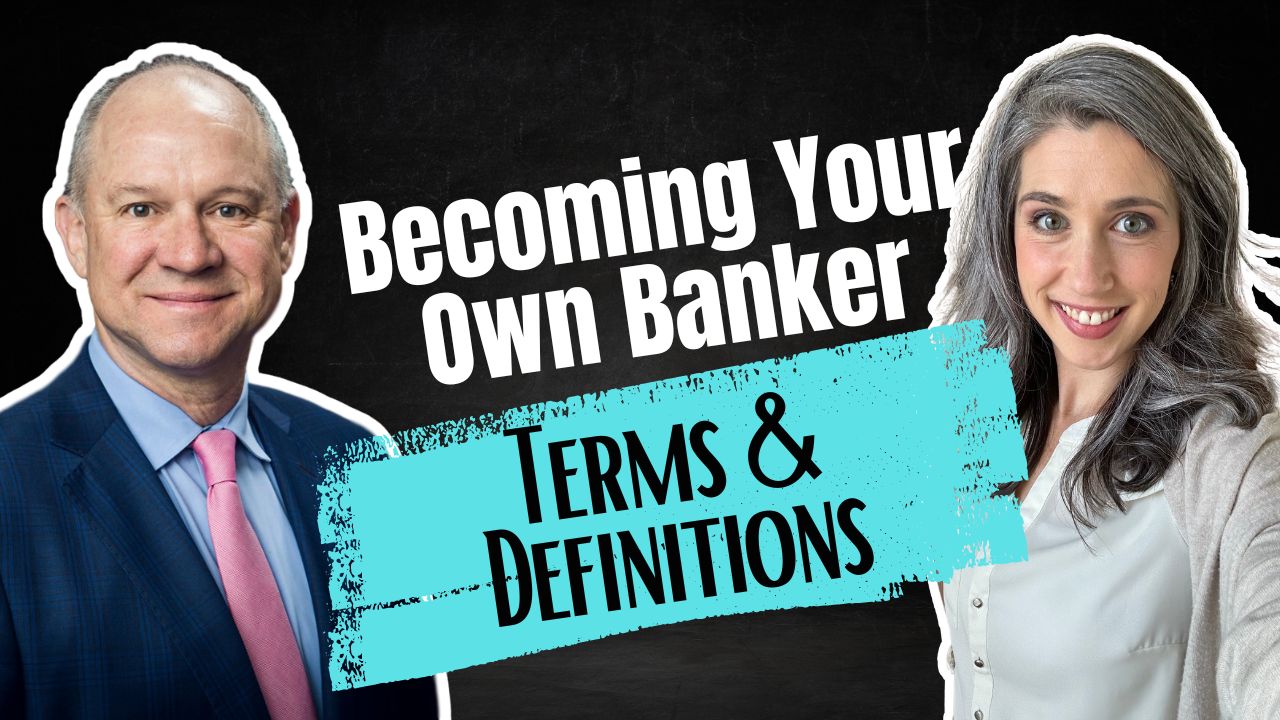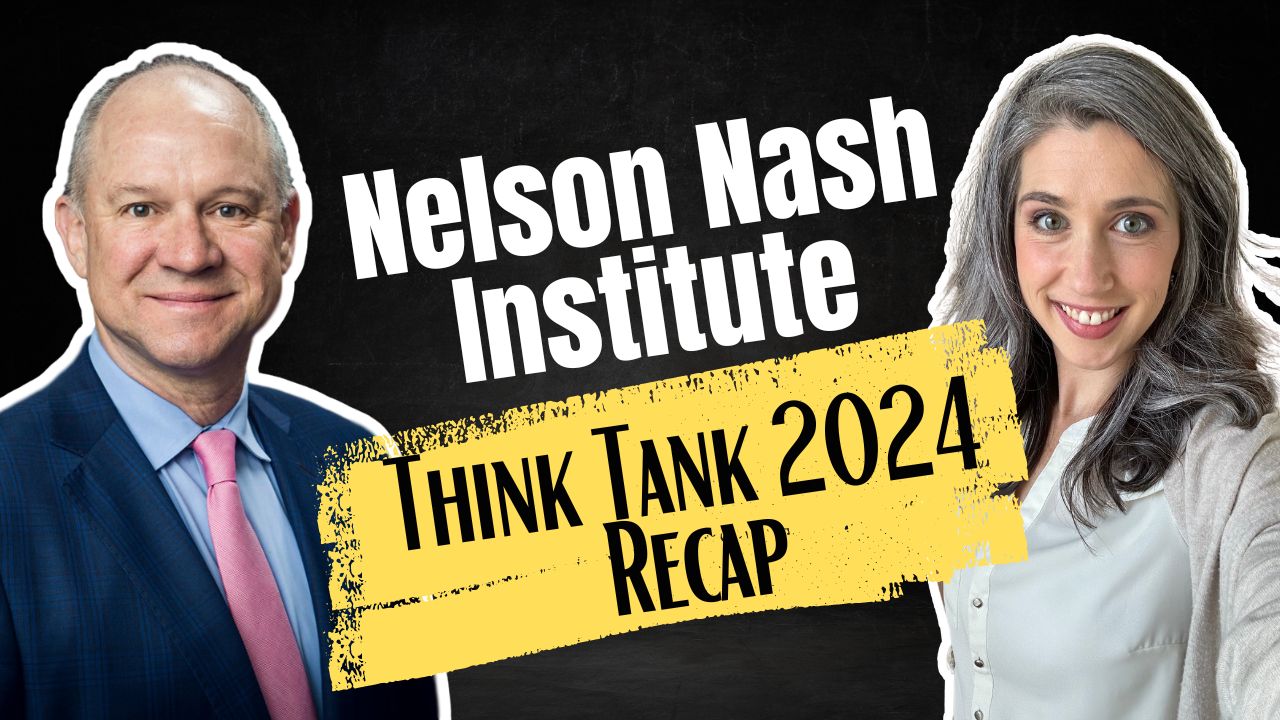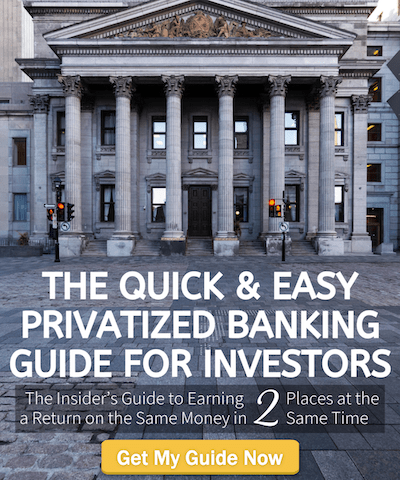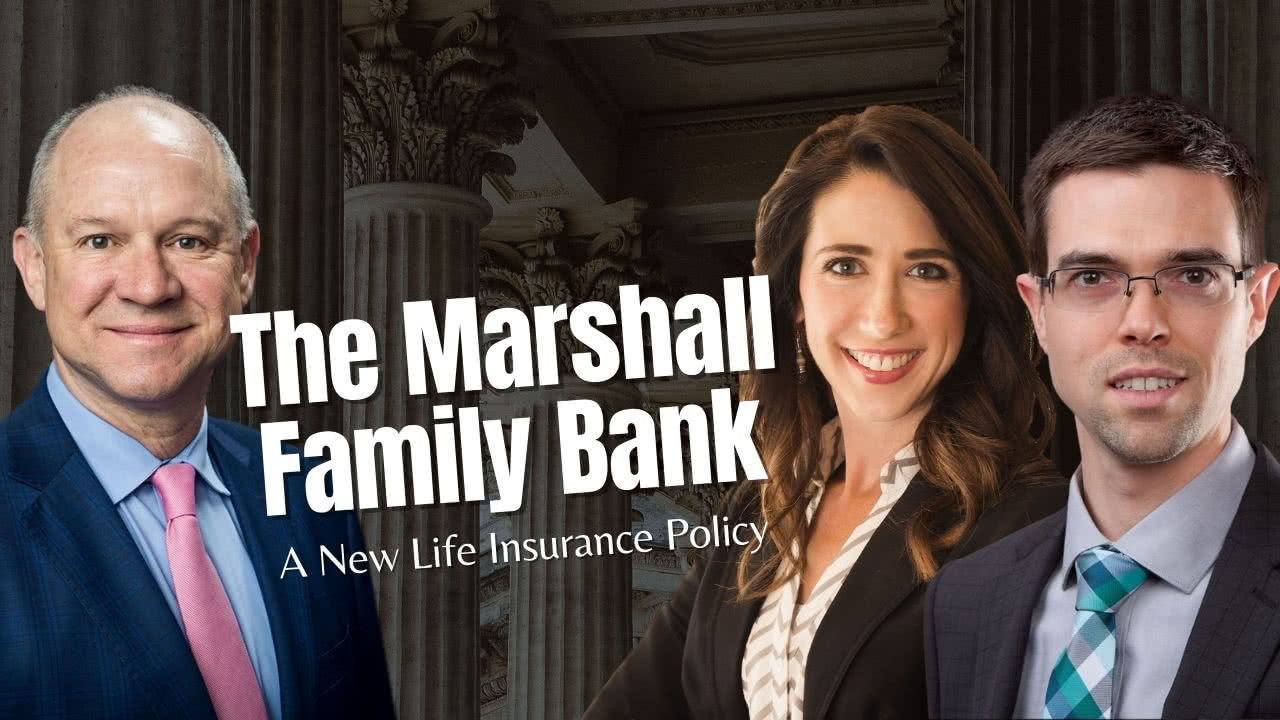
The Marshall Family Bank: Why We Started a New Life Insurance Policy
Do you want to accumulate reserves and investible capital where it’s safe and liquid, so you have the cash to invest in the widest range of circumstances? Come behind the scenes as we talk about our Marshall Family Bank in real-time.
Today, we’re talking about our recent whole life insurance policy conversion with a 1035 exchange. We’ll discuss the original policy and what prompted the conversion. We also cover how we structured the new policy, what riders we added and why, and our updated cash value, dividend, and death benefit performance.
So, if you want to see exactly how we’re growing our family bank to continue today… tune in now!
Podcast: Play in new window | Download (Duration: 37:05 — 42.4MB)
Subscribe: Apple Podcasts | Spotify | Android | Pandora | RSS | More
Table of contents
How We Started the Marshall Family Bank
The Marshall Family bank had to start somewhere, so we want to start by sharing our beginnings with you. Originally, we gravitated toward whole life insurance because we were between opportunities. We were also seeking a safe place to store our cash. This was about 9 years ago.
Liquidity was one of our top priorities because we were saving almost 50% of our W-2 income in precious metals, which lacked the liquidity we needed. We still have precious metals in our portfolio today. However, after saving such a significant portion of our income, it was clear that better liquidity would be beneficial. This compounded with the realization that we needed some diversity in our assets since precious metals rise and fall in value.
It was about this time when infinite banking crossed our radar. We were searching for more liquidity and safety. The idea was appealing because we recognized the long-term benefits of a cash flow system.
[2:55] “This was when we really sunk in our teeth to the idea that whole life insurance can be a place to store cash, it can be specially designed as infinite banking to have the capital reserves, grow cash value, pay dividends because it’s a mutual policy, and also have a death benefit that transfers your legacy. And we’ve had an evolution, over the course of our life, of recognizing we also need to have human life value, which means having as much death benefit as we can have.”
The First Policy
With our first policy, we didn’t yet have the long-term vision we have now. Sometimes we didn’t pay the full premiums, and we added PUAs where we could. However, we are thankful we got started at all, rather than waiting. It still helped us to be in a better position than we would be without it. In fact, we used the policy frequently while we had it.
This policy was a $10,000 annual premium, insuring Lucas. We used it for several loans over the years, including our business and real estate investing. We’ve paid these loans back, and it’s been a great storage tank for the capital we have.
In the time since we started this policy, we’ve learned a significant amount about policy design and structure. It’s because of our knowledge that we decided to do a 1035 exchange of our first policy into a new life insurance policy.
Why the 1035 Exchange?
One reason that whole life insurance can be a great tool for wealth storage and building is that it’s flexible. If your income increases, you can get another life insurance policy and keep your others intact, effectively building a portfolio of policies. This is one reason we thought it would be interesting to have this conversation since we did a 1035 exchange instead of simply starting a new policy.
[8:40] Bruce: “Very rarely should a person 1035 a whole life policy to another whole life policy—unless they have specific reasons for doing it.”
Some of the reasons people 1035 whole life insurance into other whole life insurance are:
- To receive better service from a new life insurance company,
- More death benefit,
- Better (or different) policy design.
However, when you do a 1035 exchange, you’re starting a new policy altogether. That means you’re starting from ground zero in terms of building cash value and liquidity. You may also end up reducing some of the benefits. This is why, for many people, 1035 is not ideal.
One reason we sought a 1035 exchange for this first policy was to benefit from a different policy design. Like we said, we began our first policy with less knowledge than we have now. We might have done some things differently, otherwise. Now, the Marshall Family Bank has a defined purpose. So, we want our policy to be in alignment with that purpose going forward.
We also moved to a life insurance company we had more faith in. We’ve never been afraid that the death benefit would disappear. However, we prefer to stay with a mutual company, and we wanted to avoid the possibility of our company demutualizing. While it’s hard to say for certain whether that will happen, sometimes there are signs in how the insurance company operates and handles their own money.
What is Demutualization?
A mutual life insurance company is a company that is owned by the policyholders. Mutual companies pay dividends to the policyholders because they are partial owners. When a company demutualizes, it often means it’s bought out by someone else, and it becomes a stock company. As you can probably guess, this means the company becomes owned by stockholders and pays dividends as such.
The infinite banking concept works so well with mutual life insurance companies in part because of the dividends. After all, they support uninterrupted compounding and help policies grow. Bruce experienced this with one of his policies, where a company demutualized. Although he stopped earning dividends, he decided to keep the policy rather than 1035 into a new dividend-paying policy.
He kept his policy because he started it when he was young, so his leveraged death benefit was really high. For him, it was worth keeping in place for the death benefit alone. This happened in the 90s, and the policy is still strong.
How Does a 1035 Work?
When you’re starting a 1035 exchange, you start the process the way you would when you’re purchasing a new life insurance policy. In other words, the application process is the same. During the discovery process, you list your existing life insurance policies. During this stage, you can determine if you want to do a 1035 exchange on any of your policies. This means you would use the cash value from an existing policy to pay for paid-up additions, with no tax ramifications. (If you just liquidate the policy without an exchange, you would pay income tax on the amount above premiums paid into that policy.)
When you do a 1035 exchange, you pay your premium first. Then the company initiates the exchange of funds into the new policy. There’s a set amount of death benefit you can get, based on this premium. Because the policy is paid up, you have access to a high cash value, the same way you would with the original policy. Then the company sends a letter to the previous company, giving them 90 days to transfer the policy funds.
At this point, the original company will send you a letter asking you if you’re sure. This letter lists the benefits you are giving up. If you’re working with an advisor or advisory board on this process, you have probably already discussed the pros and cons of this choice. Then, you must respond to the letter, giving your consent to transfer the funds. At this point in the process, you need only wait for the company to transfer funds.
The process takes some time so that all the legal bases are covered.
The Old vs. New Marshall Policy
Our initial policy in the Marshall family bank was $10,000 a year in premium. Since we hadn’t fully funded the policy, it wasn’t performing the way it was projected.
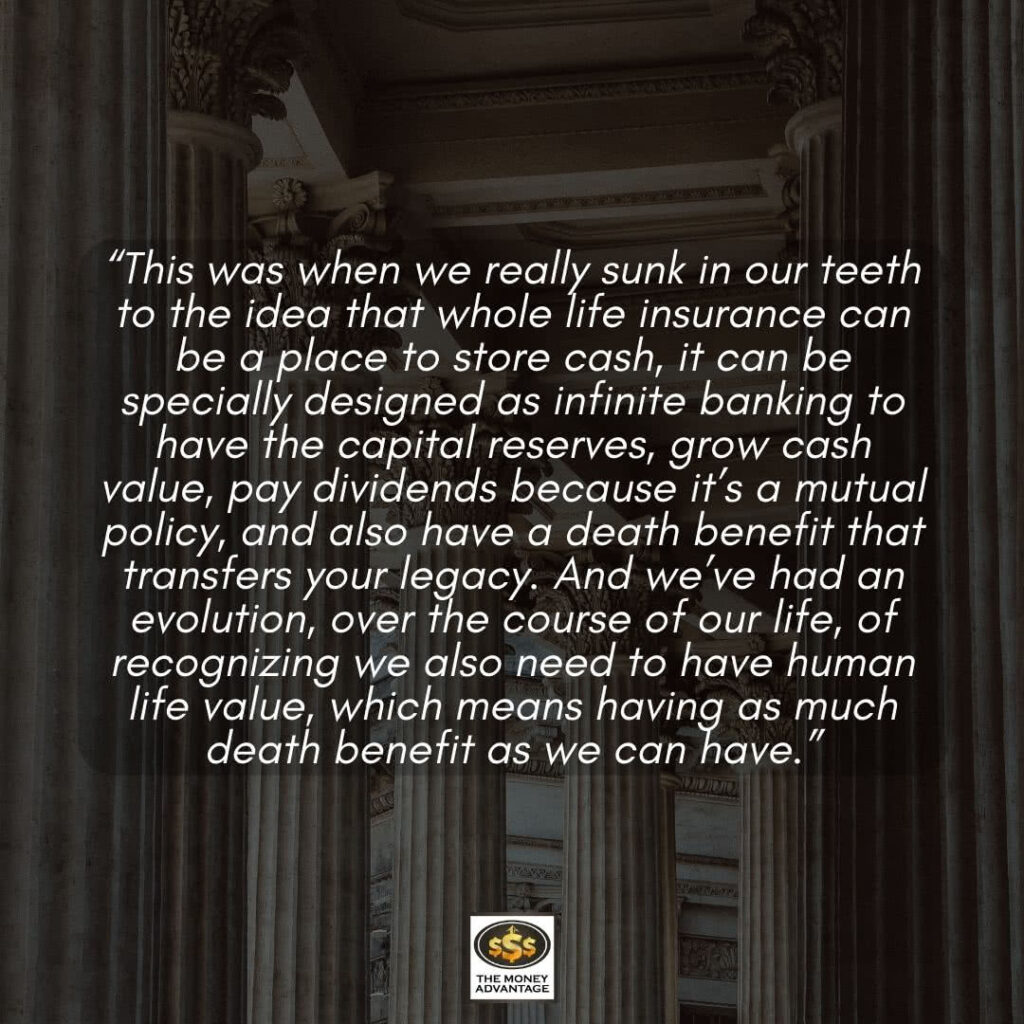
At the 9-year mark, we were in the ballpark of about $61,000 of cash value, and about $445,000 of death benefit. We didn’t reach the “break even” point because we were not maximally funding our policy. At this 9-year mark, we decided we wanted to start paying $20,000 in premium. So we applied for the new policy, paid our initial premium of $20,000, and then worked on the 1035 exchange to move the $61,000 over. We used this $61,000 of cash value to make a single premium payment that went into the policy as a paid-up additions rider.
In the first year of the new policy, what we’re looking at is a new total death benefit of about $827,192. The original policy had a death benefit of $445,000, so there’s a significant increase in total death benefit. But, it’s interesting to note that in this new policy, the money transferred only contributed to $150,000 worth of the new death benefit. So there’s a loss that occurred in that transfer, even if the total death benefit increased.
Part of the reason there’s a loss is due to age. $60,000 of single premium buys less death benefit the older you get. This is just a function of life insurance and the actuarial data that goes into the cost calculations.
So Why a 1035?
In part, we felt that the knowledge we’ve gained about policy design would be put to better use in a new policy. We believe that in the long-term, this new policy will do more for our family-banking system and our money’s purpose than our original policy.
We’re also comfortable making this decision because we have other life insurance in place, and are seeking to insure up to our human life value, including term insurance. In other words, we have a foundation that allows us to make an informed choice like this. If this was our only policy, this may not have been the ideal solution.
The design of our new policy has ensured that we can pay as much premium as possible for as long as possible. We also want more safety and liquidity, so we were willing to sacrifice some growth to prioritize those two things. This is why we added a waiver of premium rider, to protect the policy in the event Lucas becomes totally disabled. We also added a 30-year term insurance rider to the policy.
Our policy is also a split of about 40% base premium and 60% PUAs. There’s some debate about the ideal policy design, but ultimately we don’t believe that there’s any “supreme” policy design. Different designs serve different purposes. We wanted this particular blend of early cash value and long-term growth, and felt that it would serve our family best. This is not a statement of what we believe to be the “only correct design.”
Execute Today
If you’re thinking about starting a whole life insurance policy, we encourage you to start today. We wanted to be transparent with our own banking system, because we are so thankful we started when we did. In fact, we wish we had even started it ten years earlier than we did.
Even though we ultimately exchanged our first policy for a new one with a 1035 exchange, that policy served us well for years. It created a firm foundation for us and helped us accomplish a lot in our business and personal lives. Our banking system has grown and changed over the years, and we wouldn’t be where we are now if we hadn’t taken the first step when we did.
Our policy is proof that your first step doesn’t have to be perfect, but if you don’t take a step at all, you’ll only lose time and growth.
Book A Strategy Call
Do you want to coordinate your finances so that everything works together to improve your life today, accelerate time and money freedom, and leave the greatest legacy? We can help! Book an Introductory Call with our team today https://themoneyadvantage.com/calendar/, and find out how Privatized Banking, alternative investments, or cash flow strategies can help you accomplish your goals better and faster. That being said, if you want to find out more about how Privatized Banking gives you the most safety, liquidity, and growth… plus boosts your investment returns, and guarantees a legacy, go to https://privatizedbankingsecrets.com/freeguide to learn more.
Becoming Your Own Banker, Part 28: Infinite Banking Definitions
Have you ever felt like you’re on a financial hamster wheel, constantly spinning but never gaining traction? Join us as we unpack the epilogue and glossary of Nelson Nash’s “Becoming Your Own Banker.” It’s a journey through the intricate philosophy of IBC, as we cover Infinite Banking definitions that shows how effective money management can…
Read MoreNelson Nash’s Legacy: Think Tank 2024 Recap
Embark on a transformative financial odyssey with us as we reflect on our profound experiences at the Nelson Nash Think Tank for 2024. Unlock the doors to personal economic empowerment with the Infinite Banking Concept (IBC), a brainchild of the late Nelson Nash that revolutionizes the use of dividend-paying whole life insurance. We shed light…
Read More
